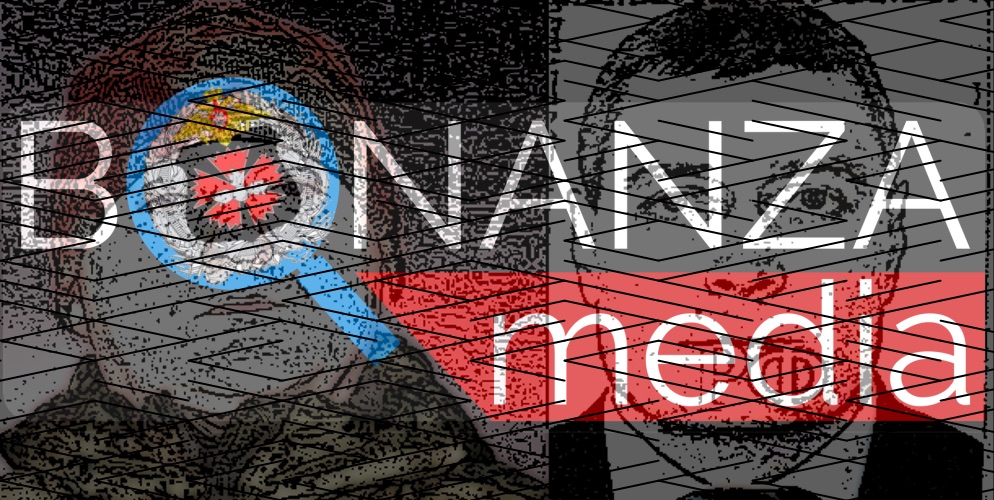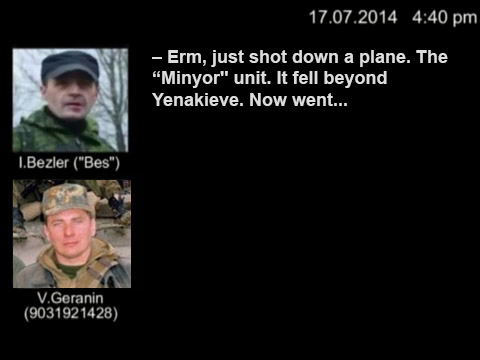Russian Ministry of Foreign Affairs Plagiarizes LiveJournal Posts in MH17 Response
On Thursday, the Russian Ministry of Foreign Affairs (MFA) responded to Bellingcat’s follow-up response requesting specific examples of faked evidence. The MFA sent its first reply last week, which can be read in full here. In its second response, with the original document in Russian here and in English here, the MFA did provide the specific examples of fakery requested by Bellingcat; however, these examples were plagiarized from two LiveJournal blog posts from the user “albert-lex.” The first of these blog posts, “Belling the Cat,” is from October 2015, and the second, “Anti-Russian experts on NATO’s Hook,” is from March 2016.
The structure of the letter itself is reminiscent of these two blog posts, as the central claims made by the MFA are also in the blog post, including the use of the same pictures. There are numerous examples of minor and major plagiarism, but this post will outline four of the most blatant examples. The plagiarisms will be detailed in their original Russian with an English translation and explanation of the offenses.
MFA Letter:
…на первой фотографии имеется запасное колесо, на других оно отсутствует (получается, что запасное колесо то есть, то нет, то снова есть).
…the first photo shows a spare tire while the others don’t (apparently the spare tire just disappears and then pops up again).
На первом фото, например, имеется запасное колесо, а на других оно уже отсутствует. (…) Так что, получается, что «запаска» то есть, то нет, то снова есть…
The first photo, for example, shows a spare tire while the others don’t. (…) Apparently, the spare tire just disappears and then pops up again…
- Here, the MFA clearly lifted the phrasing and evidence from the Albert-Lex blog. The MFA response author slightly changed the text, such as swapping the shortened “photo” for the official “photograph,” and removing the words “например” (for example) and “уже” (already). The parenthetical remark at the end of the sentence is a direct copy-paste from the Albert-Lex post, with the colloquial “запаска” (spare) changed to a more official “запасное колесо” (spare tire) .
MFA Letter:
В качестве доказательств – десятки фотографий из социальных сетей, на которых изображены какие-то солдаты с размытыми лицами, боевая техника с плохо читаемыми бортовыми номерами, к тому же непонятно где находящаяся.
The proof presented is dozens of photos taken from social networks showing some soldiers with blurry faces and military vehicles with poorly visible side numbers in unknown locations.
В качестве доказательств – десятки фотографий из социальных сетей, на которых изображены какие-то солдаты с размытыми лицами, боевой техники с плохо читаемыми бортовыми номерами, к тому же непонятно где находящейся.
- The plagiarism could not be more obvious here. The only differences between the two texts are that the MFA letter used an en dash (double-hyphen turned into a longer dash in MS Word), while the Albert-Lex post only used a single hyphen, and the correction of a small grammatical error or typo (изображены … боевой техники / боевая техники).
MFA Letter:
Но даже здесь фальсификация – ведь перед нами ракета «Куб», которая, кстати, снята с вооружения и в российской армии не используется.
But even this is a falsification: what we see is a Kub missile which, by the way, has been retired and is not used by the Russian army…
Заодно британские «сыщики-любители» мимоходом перепутали ракету «Бук» с ракетой «Куб», которая, кстати, тоже давно снята с вооружения.
At the same time the British “amateur sleuths” casually mixed up a “Buk” rocket with a “Kub” rocket, which, by the way, was long ago retired as well.
- The plagiarism here is still evident, but a bit less obvious than the previous examples. The phrase itself is fairly generic (removed from service), but the “which, by the way” interjection is a clear sign that the Albert-Lex post was the source for the MFA’s claim.
Lastly is the title used in the MFA letter regarding Bellingcat’s report analyzing the satellite images from the Russian Ministry of Defense related to MH17. The Russian title of the report is, and has always been, “Analysis of the Satellite Images Published by the Russian Ministry of Defense” («Анализ спутниковых изображений, опубликованных Министерством Обороны России»). In his analysis, Albert-Lex presented the title of the report as “Analysis of Satellite Images Published by the Russian Ministry of Defense in the International Press-Conference of 21 July 2014” («Анализ спутниковых изображений, опубликованных Минобороны России на международной пресс-конференции 21 июля 2014 г»). Bellingcat has never used this title, and a Google result for the phrase only returns a few examples–all shares of the Albert-Lex post.
In the MFA letter, they refer to the Bellingcat report as “Analysis of Satellite Images Published by the Russian Ministry of Defense in the International Press-Conference of 21 July 2014” («Анализ спутниковых изображений, опубликованных Минобороны России на международной пресс-конференции 21 июля 2014 г»). Unless the author of the MFA response somehow came up with an original phrasing that has only been used by Albert-Lex, s/he must have copy-pasted the title from the Albert-Lex LiveJournal post.
Through its response, it seems as if the Russian MFA has adopted the positions on evidence surrounding the downing of MH17 from the LiveJournal blog of “albert-lex.”


